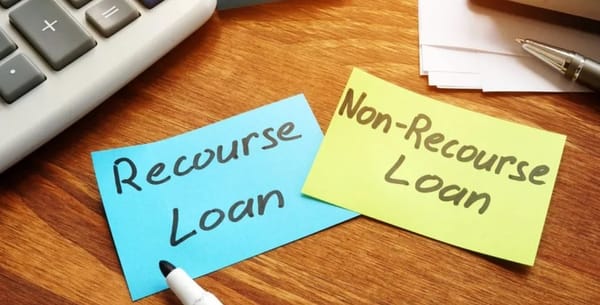Investing for Teens: What They Should Know

Investing early in life is one of the smartest financial decisions anyone can make, and for teens, it can be especially transformative. With time on their side and the power of compound interest, teens have a golden opportunity to create a stable financial future. This guide explores essential investment principles, tools, and strategies tailored for teens, enabling them to embark on their investment journey confidently.
Why Teens Should Start Investing Early
Time is the greatest ally when it comes to investing. Starting early allows teens to:
- Harness Compound Interest: Investments grow faster when they compound over decades.
- Develop Financial Habits: Learning to save and invest early instills discipline.
- Build Wealth Gradually: Teens can start small, avoiding the pressure of high-risk ventures later.
Understanding the Basics of Investing
Before diving into specific investment options, teens must grasp key financial concepts.
What Is Investing?
Investing involves putting money into assets that generate returns over time, such as stocks, bonds, mutual funds, or real estate. Unlike saving, where money sits idle, investments work to grow wealth.
Key Investment Terms Teens Should Know
- Compound Interest: Earnings on both the initial investment and accumulated interest.
- Diversification: Spreading investments to reduce risks.
- Risk Tolerance: The ability to handle potential losses.
- Liquidity: How quickly an investment can be converted to cash.
Setting Financial Goals

Every teen investor needs clear financial goals. Goals help determine the amount to invest, the timeline, and the best investment options.
Short-Term Goals
These include saving for a car, college expenses, or gadgets. Consider options like savings accounts or Certificates of Deposit (CDs).
Long-Term Goals
Longer-term goals, like retirement or buying a home, require investments with growth potential, such as stocks or index funds.
Investment Options for Teens
The investment landscape offers numerous options, but not all are suitable for teens. Below are some beginner-friendly avenues.
1. Stocks
Investing in individual companies allows teens to own a piece of a business. Stocks are a great way to learn about markets but come with higher risks.
2. Exchange-Traded Funds (ETFs)

ETFs offer a diversified portfolio of assets, making them ideal for beginners. They’re low-cost and easy to trade.
3. Mutual Funds
Managed by professionals, mutual funds pool money from investors to buy a diversified set of assets.
4. Savings Accounts
A traditional savings account helps teens accumulate funds with minimal risk.
5. Bonds
These fixed-income securities provide steady returns and are less volatile than stocks.
How Teens Can Start Investing
Getting started with investing as a teen doesn’t require large amounts of money.
1. Open a Custodial Account
Since teens are typically under 18, they’ll need a custodial account, opened and managed by a parent or guardian.
2. Use Investment Apps
Platforms like Robinhood, Acorns, or Stash offer easy-to-use interfaces for young investors.
3. Leverage Educational Resources
Teens should learn about markets and investment strategies through books, online courses, and finance blogs.
Tips for Successful Teen Investing
Investing can be daunting, but these tips can simplify the process:
Start Small
Begin with affordable options like ETFs or fractional shares.
Be Consistent
Make investing a habit by setting aside a fixed amount each month.
Research Before Investing
Understanding an investment’s risks and returns is crucial.
Think Long-Term
Short-term market fluctuations shouldn’t deter long-term goals.
Avoiding Common Investment Mistakes
1. Chasing Trends
It’s easy to get swept up in hype, but trendy investments often carry high risks.
2. Ignoring Diversification
Placing all funds in a single investment can lead to significant losses.
3. Overlooking Fees
Even small fees can erode returns over time.
Financial Literacy for Teens
A solid understanding of personal finance is foundational to successful investing.
Budgeting
Teens should learn to allocate their money wisely, balancing spending, saving, and investing.
Saving Habits
Building an emergency fund ensures financial stability.
Credit Awareness
Understanding credit cards and credit scores can prevent future debt issues.
The Role of Parents in Teen Investing
Parents can play a significant role in guiding their teens through their first investment steps.
Provide Financial Education
Discussing family finances and investment decisions teaches practical skills.
Match Contributions
Offering to match investments incentivizes teens to save more.
Encourage Learning
Parents can share books, videos, or even involve teens in managing a family portfolio.
How to Stay Motivated as a Teen Investor
Set Milestones
Celebrate small victories, like reaching a savings target.
Join Investment Clubs
Interacting with peers can make investing more engaging.
Track Progress
Use tools or apps to monitor portfolio performance.
FAQs
What is the best investment option for teens?
ETFs and index funds are excellent options for teens due to their diversification and low risk.
Can teens invest without parental involvement?
Minors require a custodial account, so parental assistance is essential.
How much money should a teen start investing with?
Teens can start with as little as $5-$10, especially through fractional share platforms.
Why is diversification important for teens?
Diversification reduces risk by spreading investments across various assets.
How can teens learn about investing?
Books like The Little Book of Common Sense Investing and resources like Investopedia are great starting points.
Are there tax implications for teen investors?
Yes, earnings from investments may be subject to taxes, so consulting a financial advisor is advisable.
Conclusion
Investing as a teen is an empowering step toward financial independence. By starting early, gaining financial literacy, and making smart investment choices, teens can pave the way for a secure financial future. The journey might seem challenging initially, but with guidance, consistency, and patience, it’s a goal well within reach.




